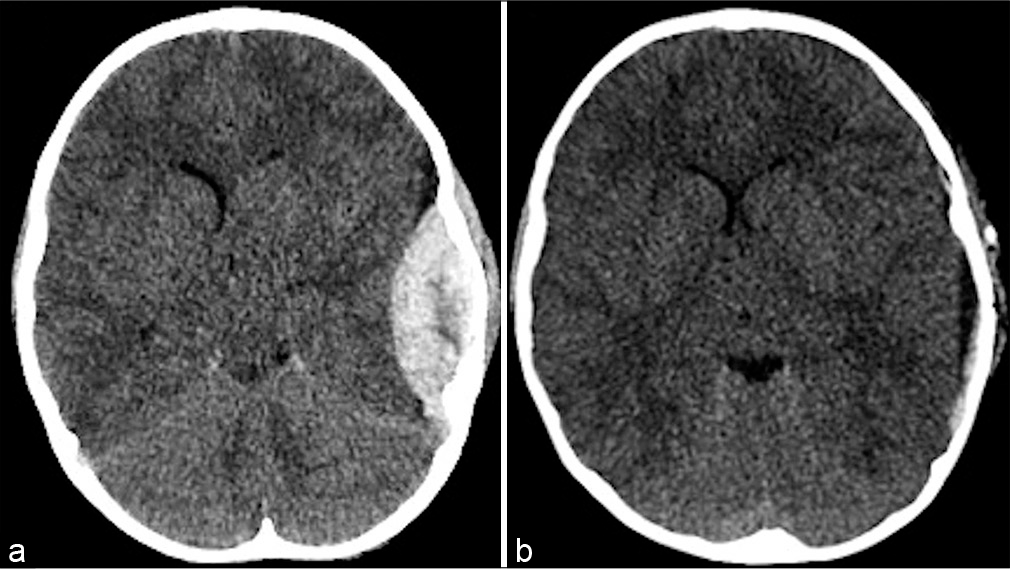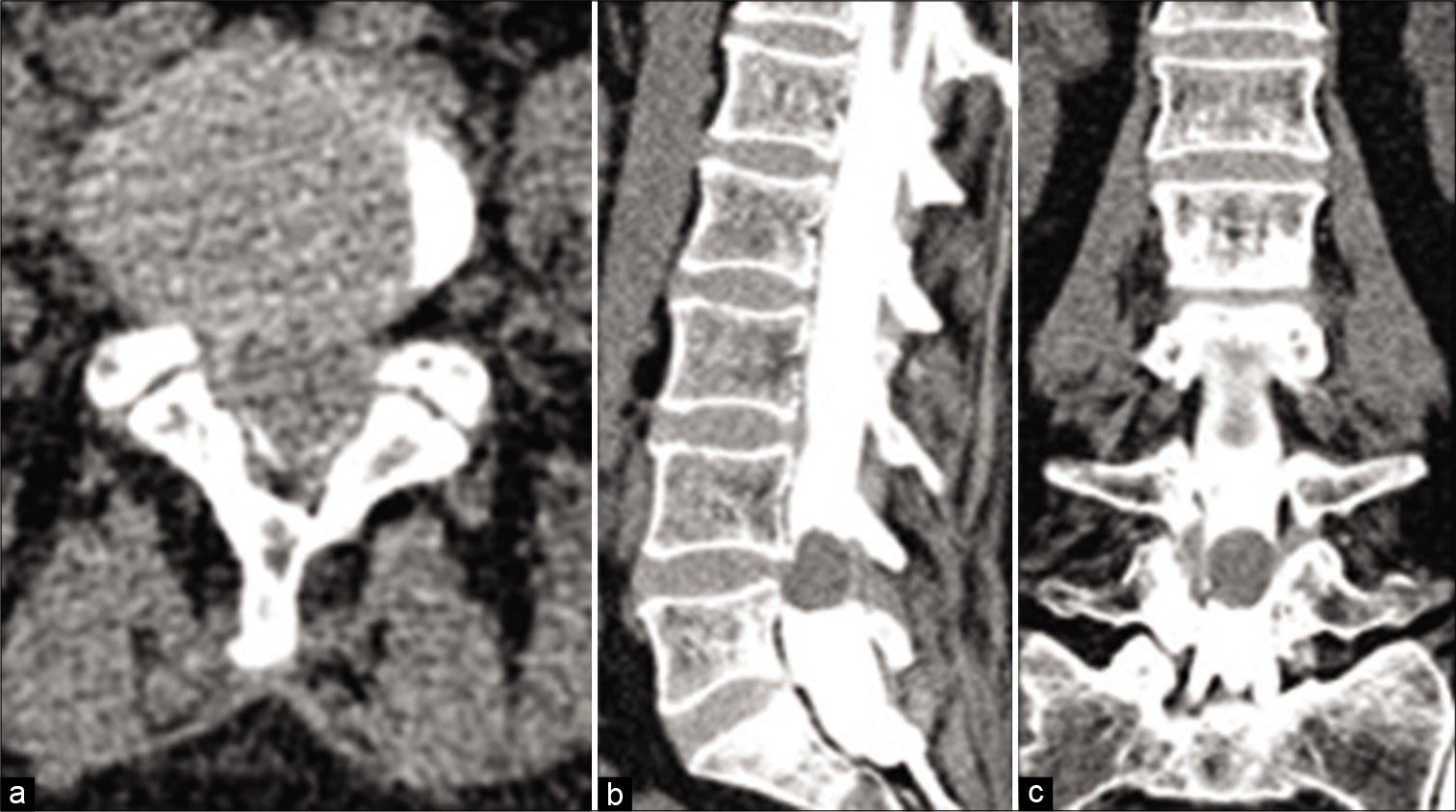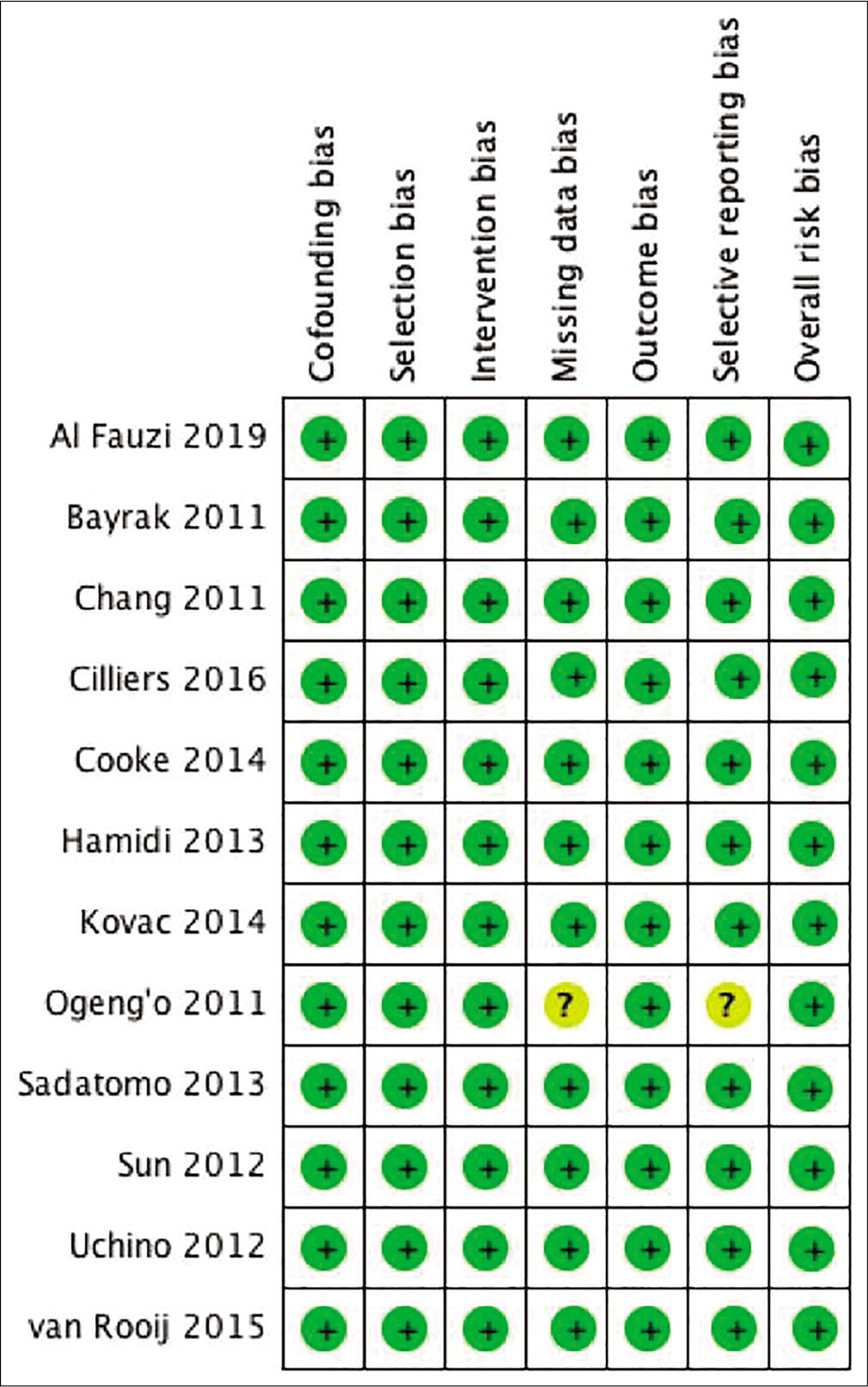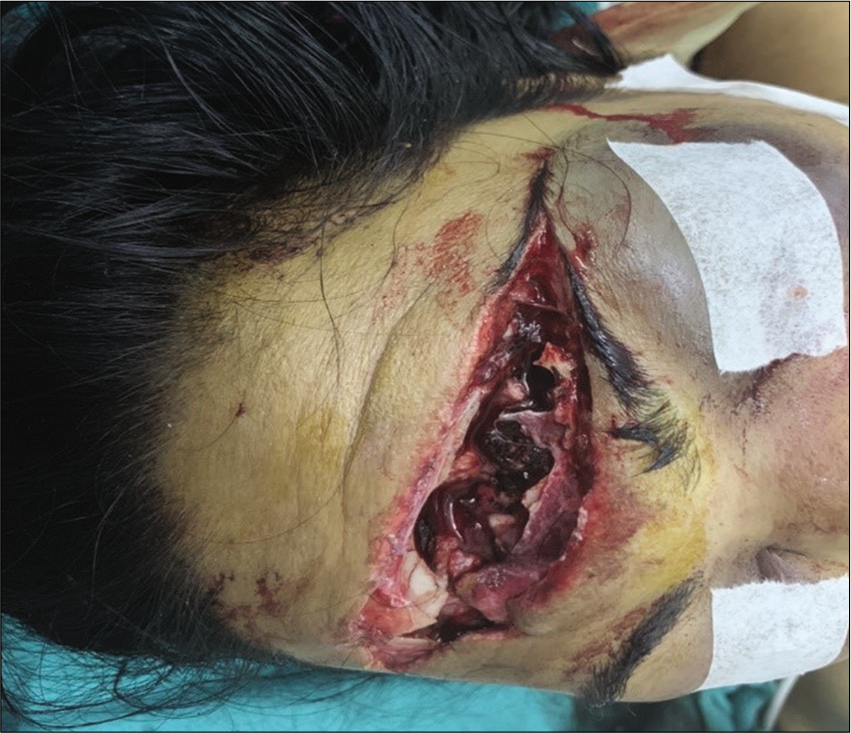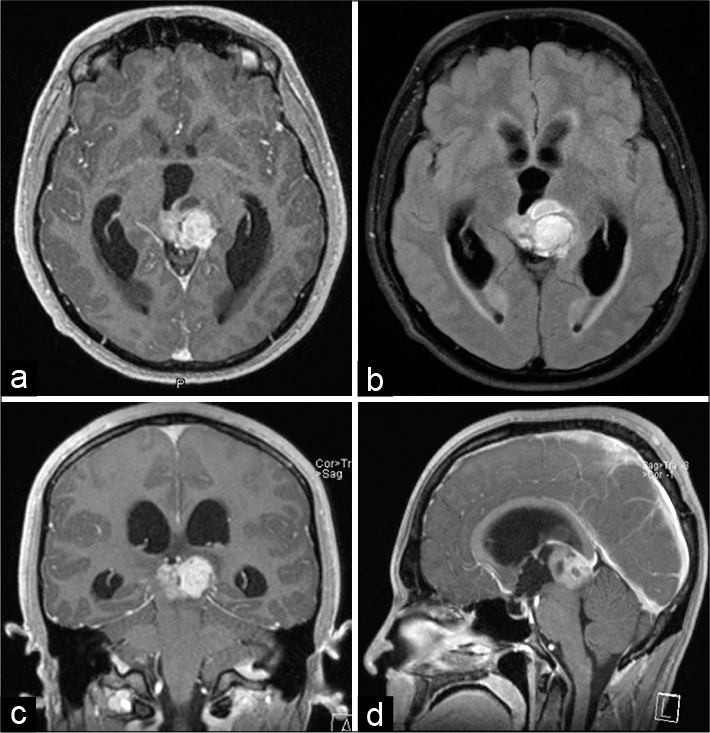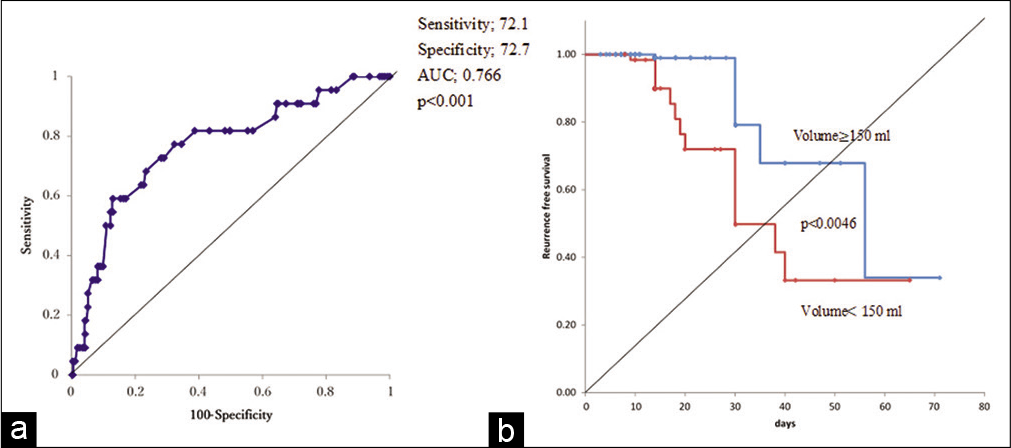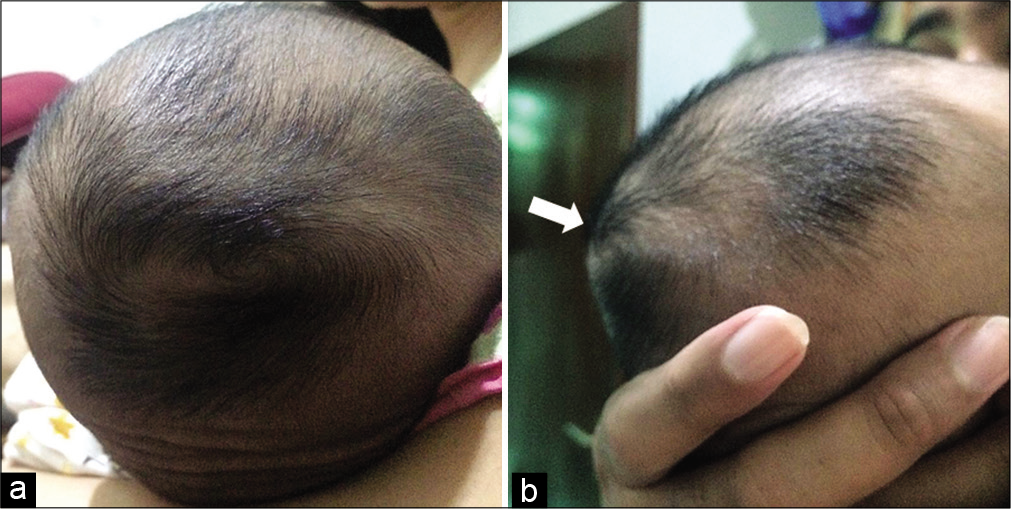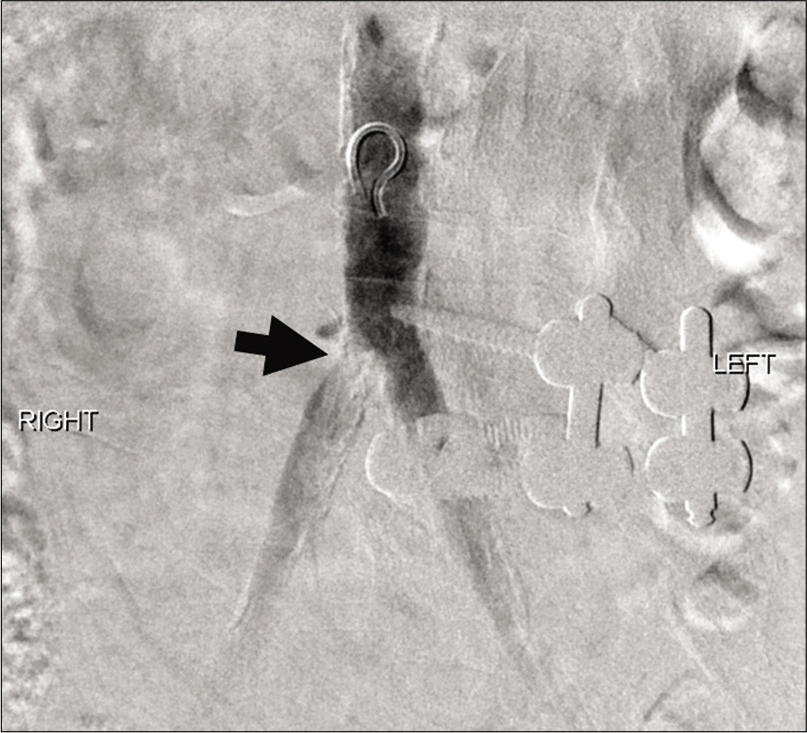Delayed presentation of a traumatic scalp arteriovenous fistula
Date of publication: 25-May-2021
Background: Arteriovenous (AV) fistulas of the scalp are extracranial vascular malformations commonly caused by trauma and typically present within 3 years. Although they follow a benign course, they can be esthetically displeasing.
Correlations between preoperative clinical factors and treatment outcome of spinal meningiomas – A retrospective study of a series of 31 cases
Date of publication: 25-May-2021
Background: The purpose of the current study is to identify the correlations between the most important preoperative clinical factors and the outcome of surgery of spinal meningiomas (SM).
Neuroangiography patterns and anomalies of middle cerebral artery: A systematic review
Date of publication: 25-May-2021
Background: As the largest and most complex cerebral artery, the middle cerebral artery (MCA) patterns and anomalies are not fully reported. At present, there is confusion about the criteria for the different subtypes. The study of MCA patterns and anomalies is important because variants such as accessories or duplicates represent a high risk of failure during endovascular embolization or navigation during treatment for ischemic stroke. This study conducted a systematic review of studies on the neuroangiography patterns and anomalies of MCA.
Extradural abscess following synthetic fabric duraplasty
Date of publication: 25-May-2021
Background: Duraplasty refers to the neurosurgical process of reconstructing dural defect. Variety of materials is used for such reconstruction, including natural, semisynthetic, and synthetic materials. Although synthetic materials are readily available and easy to apply, these are associated with foreign body reaction which may lead to serious consequences in some cases. We describe one such rare instance of extradural abscess after polypropylene synthetic fabric duraplasty.
Parkinsonism reversed from treatment of pineal non-germinomatous germ cell tumor
Date of publication: 25-May-2021
Background: Parkinsonism is a rare complication of non-germinomatous germ cell tumors (NGGCTs) arising from the pineal region.
Intraoperative hematoma volume can predict chronic subdural hematoma recurrence
Date of publication: 25-May-2021
Background: We routinely measured the exact chronic subdural hematoma (CSDH) volume during single burr hole surgery. To date, several risk factors have been reported for CSDH recurrence, including sex, hematoma volume and degree of midline shift calculated from computed tomography, use of anticoagulants or antiplatelet medications, and alcohol consumption habits. The aim of this study was to clarify whether hematoma volume, in conjunction with other factors, can predict recurrence.
Delayed subaponeurotic fluid collection on an infant’s head: Underreported case and review of the literature
Date of publication: 17-May-2021
Background: Delayed subaponeurotic fluid collection (DSFC) is a relatively uncommon problem, probably under reported soft swelling in the scalp which usually develops in infancy that occurs weeks to months after birth. Although the exact etiology remains unclear, several theories have been postulated such as (i) cerebrospinal fluids (CSF) leak from microfractures of the skull and (ii) disrupted lymphatic drainage, gradually liquefying subaponeurotic bleeding. Here, we reported typical clinical findings of DSFC and analysis of the fluid aspirate from our patient. To the best of our knowledge, this is the first case reported from Asia, particularly from Indonesia.
Differentiation of vascular claudication due to bilateral common iliac artery stenosis versus neurogenic claudication with spinal stenosis
Date of publication: 17-May-2021
Background: Differentiating between neurogenic and vascular claudication may be difficult. Vascular claudication due to aortic and iliac artery occlusions may present as low back, hip, and buttock pain while walking short distances. These findings are often very similar to those seen for neurogenic claudication attributed to lumbar stenosis.
Optimal design of neurosurgical hybrid operating room
Date of publication: 17-May-2021
Pericranial and scalp rotation flaps for occipitocervical hardware exposure with CSF leak in rheumatoid arthritis patient: A case report and review of the literature
Date of publication: 17-May-2021
Background: There are several etiologies of craniocervical junction instability (CCJI); trauma, rheumatoid arthritis (RA), infections, tumors, congenital deformity, and degenerative processes. These conditions often require surgery and craniocervical fixation. In rare cases, breakdown of such CCJI fusions (i.e., due to cerebrospinal fluid [CSF] leaks, infection, and wound necrosis) may warrant the utilization of occipital periosteal rescue flaps and scalp rotation flaps to achieve adequate closure.


